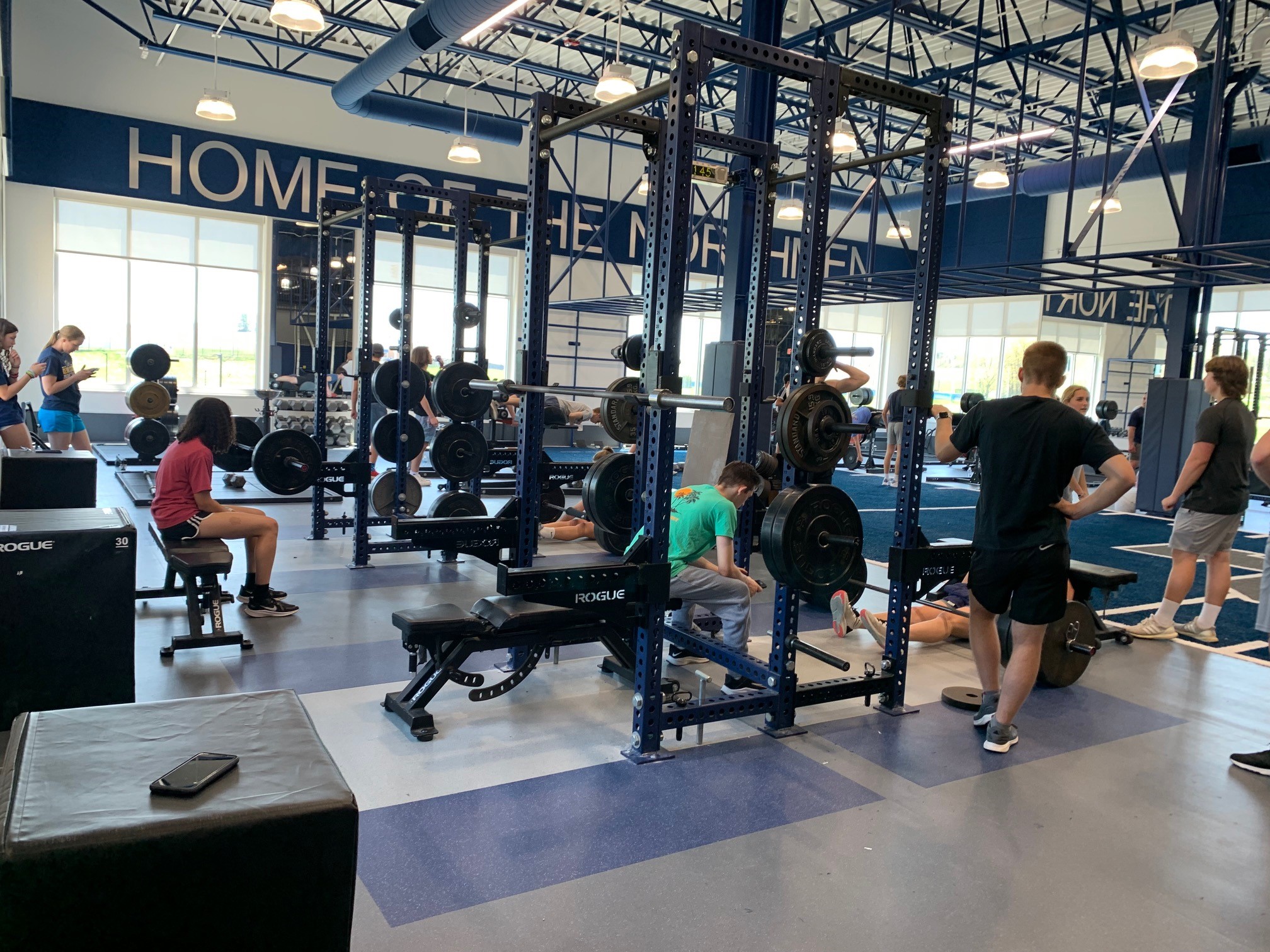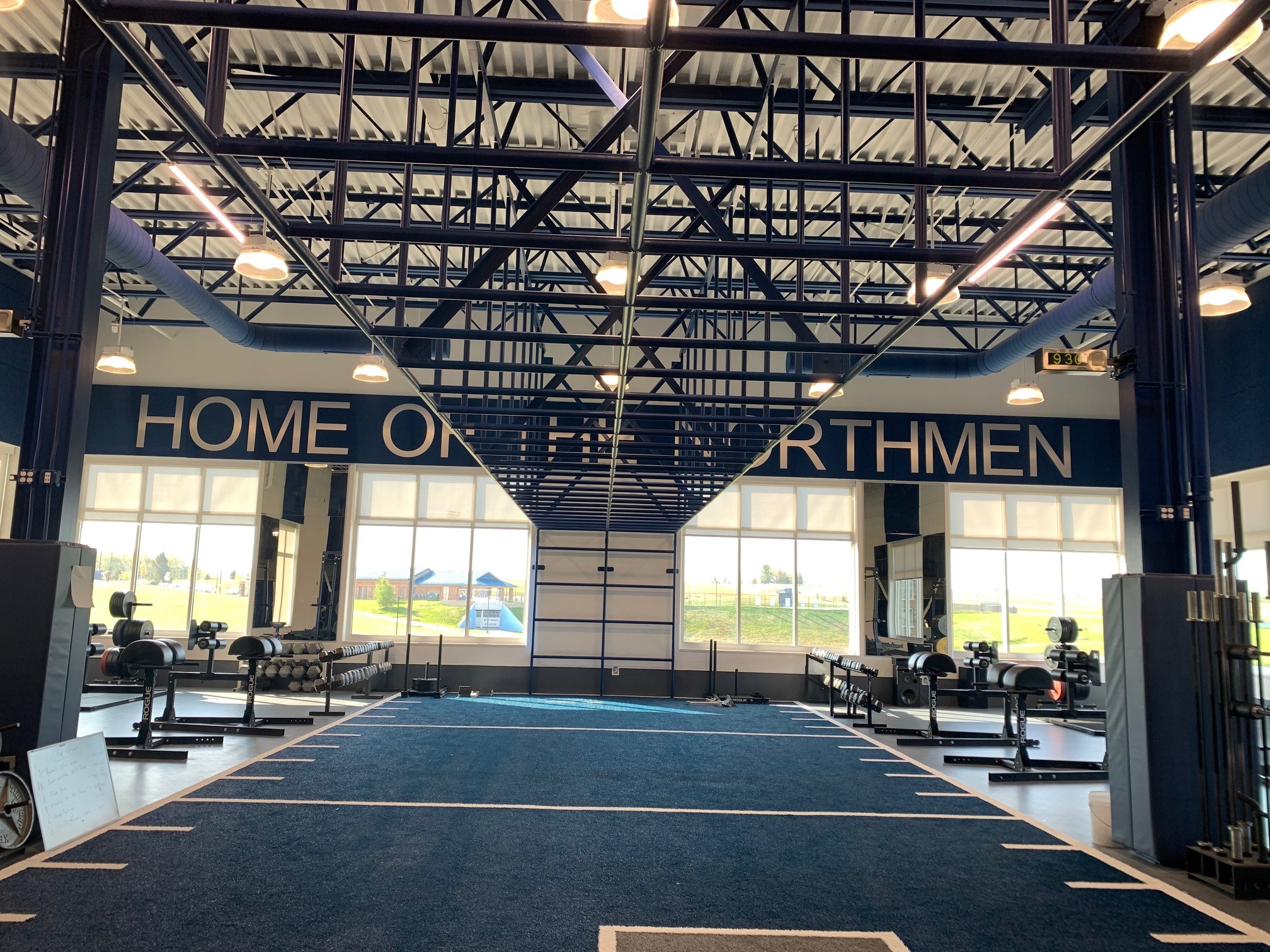There are times when you see what kind of services kids have access to at school these days, and you think “Boy, if only I would have had something like that back in MY day.” I had that exact feeling a few weeks ago when I read Drew Kochanny’s article about the strength coach Petoskey High School (PHS) has available to student-athletes in their weight room.
I believe my hometown high school’s weight room was built during my freshman or sophomore year. It was a 40×100-foot space that was filled with every piece of equipment needed to help a teenager get faster and stronger. The training programs were mainly put together by the coaches, who were in there training us nearly every day.
The key difference between then and now was access to training information. The internet as a learning resource wasn’t nearly as prevalent then as it is today. For context, I believe I sent my first email my senior year of high school, and I was a bit of an early adopter. My recollection is that our coaches were programming our workouts based on how they were trained as student-athletes. I’m certain there were some books kicking around the training room, but certainly nothing as comprehensive as the content available today in online courses and social media.
When I read that PHS athletes have a dedicated strength coach to staff their fitness facility, I was both envious and intrigued. I reached out to Levi Manor, MA, CSCS to learn more about what he offers to PHS athletes to help reduce the chances that I end up seeing them in our physical therapy clinic due to a sport-related injury. Manor is a Certified Strength and Conditioning Specialist (CSCS) and holds a master’s degree in sports administration. He is coming into his second year as the PHS strength and conditioning coach.
Fall sports are coming up soon. What are you doing to prep PHS athletes for their upcoming seasons?
While there are some common-denominators between sports, we do tailor programming based on specific competition demands. For instance, we have been working to develop stronger necks in our football players to reduce the risk of concussion. We have also been focusing on plyometric work to get their lower bodies ready to the high ground impacts the players experience.
Volleyball players are prone to shin splints, so they also participate in a lot of pre-season plyometrics. The difference between volleyball and football conditioning tends to focus on developing good force balance in the torso and shoulders that is required for overhead striking.
Soccer players are prone to groin and hamstring injuries, so we focus a bit more on the muscles that protect those areas, as well as progressions that build to max sprint speed.
Would the volleyball and cross-country teams do the same workouts, or are they different?
There are both similarities and differences in their programming. All athletes need a base layer of strength, regardless of their sport. I focus a bit more on forward/backward directional training with cross-country athletes. For volleyball players, I program about a 50/50 split between single- and multi-directional lower body training.
What kind of feedback have you received from the PHS athletic community about the training you offer?
The coaches I’ve worked with have been great and constantly show their appreciation for what I’m doing with our athletes in the weight room. I’ve received a ton of positive feedback from parents as well.
What do you enjoy the most about your role in the PHS athletic community?
Hands-down, its building relationships with my athletes and getting to work with them daily. I try to make myself as available as I can and tailor training to the individuals so I can best meet their needs.









